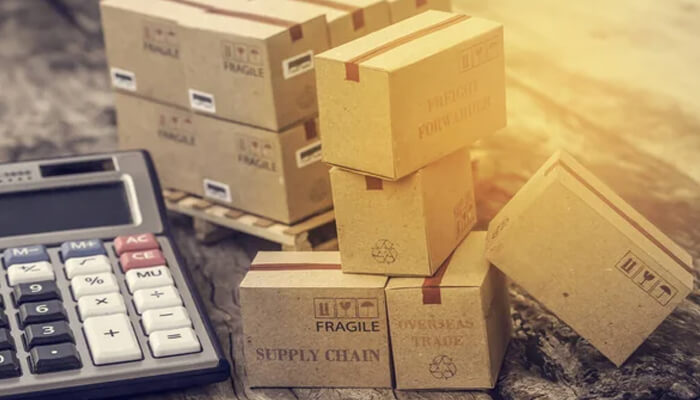With government norms, constantly evolving consumer trends, industry challenges, the need for sustainability, and other such factors, the Packaging industry is facing a paradigm shift from the traditional need for plain corrugated boxes.
The last few years have been a challenge for the packaging industry as the demand for customized and personalized packaging increases and thus, it also increases the turnaround time for designing and also requires flexible packaging solution options for customers. One way to meet customer demands is by using packaging design software.
With so many changes being witnessed and as the packaging industry continues to evolve, businesses in this field will face new challenges in the coming year. To help packaging stores prepare for the coming year and how they can thrive in such a competitive and evolving market, here are some of the top challenges that packaging businesses may encounter, and ways to overcome them:
Watch the Webinar on Web To Pack:
Challenges that the packaging industry will face
1. Sustainability concerns:
With an increasing focus on reducing waste and protecting the environment, packaging businesses will need to find ways to produce eco-friendly and sustainable packaging options. Consumers are becoming more conscious of the environmental impact of packaging, and are demanding more sustainable options from brands.
Also, with the increased adaptability of technology, customers can now also trace the packaging source with provenance-supporting technology platforms. To authenticate their claims for a sustainable supply chain and use of raw materials, the platforms can be used to see which materials were used and how they were sourced. Thus, not only does packaging industries have to use sustainable production material, they also have to make purchases from genuine sources.
To overcome this challenge, packaging businesses can integrate sustainability by using biodegradable materials, implementing recycling programs, and designing packaging that is easy to recycle.
Another way to address sustainability concerns is by using digital printing solutions, which can reduce the amount of waste generated during the printing process. Also, with digital printing the printers can print minimum quantity and that too in high quality.
2. Rising costs:
Packaging materials and production costs can fluctuate, making it difficult for businesses to budget and plan. The cost of raw materials, energy, and transportation has been on the rise, making it harder for businesses to maintain profit margins.
Apart from that, with the rising demand for personalized and brand-centric packaging solutions, the turnaround time for designing the products can also increase. This not only increases the timeline but also requires skilled manpower for designing and even that doesn’t guarantee an optimum timeline.
To combat this, businesses can reduce costs by implementing automation in the production process, which can increase efficiency and reduce labor costs. Apart from that, to make the business processes seamless and to automate the designing process, packaging businesses can also integrate web-to-pack solutions into their web platforms and ask customers to design their own packaging.
The solution provides optimum customization and personalization capabilities such as shape, size, color, and other fundamental features. Apart from that, the solution also provides design templates for quick execution and other personalization options such as placing images, logos, text, QR codes, and other such packaging elements.
Increasing need for compliance:
As governments continue to impose new regulations on packaging, businesses will need to stay up-to-date and compliant. This can be a significant challenge, as regulations can vary from country to country and can be difficult to navigate.
Also, each industry has different types of packaging requirements that can be termed norms. For instance, perishable goods require better and more secure packaging. While, other food items, fragile goods, and seasonal products also have specialized packaging and all these industries also have certain norms to follow from their respective governing bodies.
To stay compliant, businesses will need to regularly monitor industry news and updates, and consult with legal experts to ensure compliance. Another way to stay compliant is by introducing a detailed requirement-gathering phase in production to understand all the norms that need to be kept in mind for the specific industry or client.
Increased competition:
The packaging industry is becoming increasingly crowded, which can make it difficult for businesses to stand out. With more and more businesses entering the market, it can be hard to differentiate yourself and attract customers.
To overcome this, businesses can differentiate themselves by offering unique packaging designs, and specialized services, or by focusing on a specific niche market. Another way to stand out is by using digital packaging solutions which can reduce the time to market and increase the variability of packaging design which can differentiate your brand from the competition.
Evolving customer demands:
View the video for a more comprehensive understanding of packaging design tool:
Consumer preferences and demands are constantly changing, so packaging businesses will need to keep up with the latest trends and innovations. To meet customer demands, businesses will need to conduct regular market research and stay up-to-date on industry news and developments.
With the solution providing complete freedom to the customers to design their own products, customers do not have to rely on external resources. Also with ease-to-use being the cornerstone of web-to-pack solutions, they can be used by all types of customers irrespective of their design or technology proficiency. Also, integrating web-to-pack solutions can help attract customers who are looking for unique packaging options and can also increase customer loyalty.
The ongoing European Paper Packaging Alliance (EPPA) changes:
2023 will mark an integral year for the European packaging industry as discussions on the EU’s proposed Packaging and Packaging Waste Regulation have heated up recently. The discussion revolves around the European Commission proposing to businesses to integrate reusable packaging across a range of sectors.
While the change might get support, there also is a life cycle analysis that clearly shows that the regulation choices are the least sustainable choices. But, in 2023 EPPA will be making the case for the best environmental, renewable, and recyclable single-use paper packaging, and the businesses will have to adhere to the changes.
While it will primarily affect the European market, history has witnessed that the world follows suit to the European trends and thus, there is a probability that the changes might become market norms in the long run.
By being aware of these challenges and implementing effective strategies to overcome them, packaging businesses can continue to thrive in the coming year. One of the most effective ways to overcome these challenges is by using digital packaging solutions like web-to-pack.
These solutions can help businesses become more sustainable, reduce costs, stay compliant, stand out from the competition, and meet customer demands. The integration of these solutions can make a significant impact on the business’s bottom line and can help them stay ahead of the competition.
In conclusion, the packaging industry is facing a number of challenges in 2023, but by being aware of these challenges and implementing effective strategies, businesses can continue to thrive. To put it in a statement, it is essential that your business model, printing solutions, and printing technologies are flexible and scalable to adapt to the changing market.



